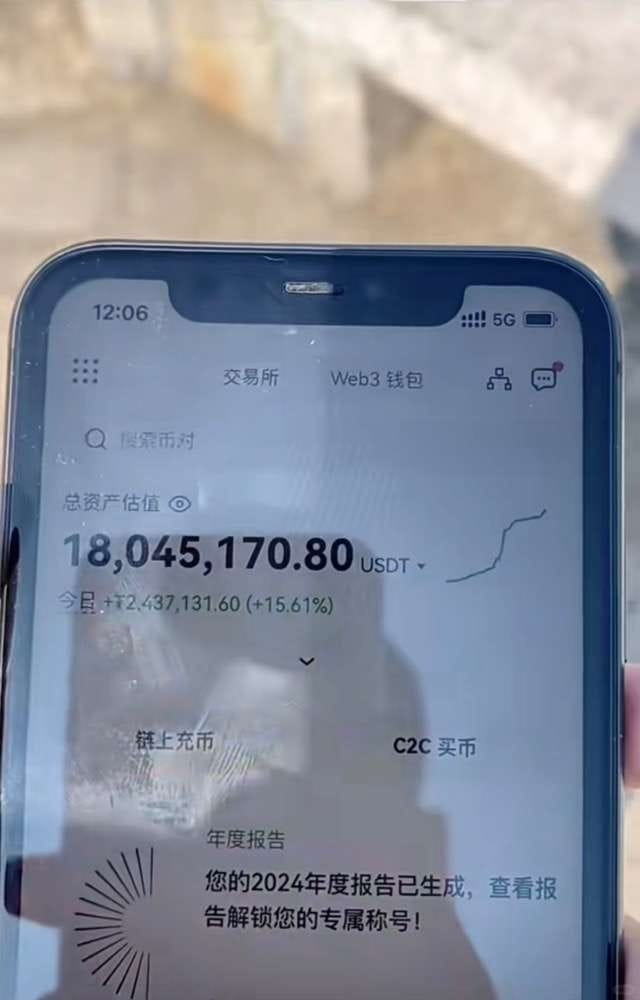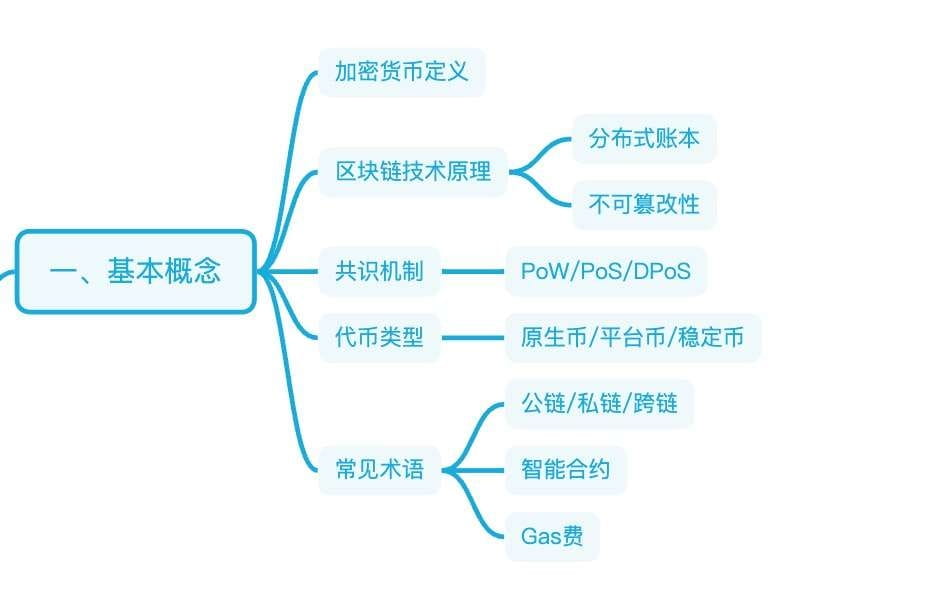If your capital is under 500,000 and you want to achieve quick success in the cryptocurrency market through short-term trading, then please carefully read this post. I believe you will gain a sudden insight into the essence of short-term trading!
I am 37 this year, have been in the market for 10 years, and have been a professional trader supporting my family for 6 years! Not choosing a finance major in college is one of my life's regrets. I started learning about stocks/finance/forex online in my freshman year. The red and green screens filled my life with color, captivating me. With infinite longing for the market, I opened my account foolishly in my sophomore year and gradually learned more about the cryptocurrency space through a classmate's introduction. I found it very interesting and thus began my investment career.
Like most friends who have recently entered the market, at first, everyone becomes infatuated with technical indicators, constantly using different coins for backtesting to find patterns; eager to enter low-priced coins or coins that have significantly corrected, believing their safety is higher. In fact, these perceptions of the market are completely wrong.
Later I understood that if you want to quickly gain returns in the market, you must engage in short-term trading. Combine medium and long-term compounding together!
The conclusion is: do not let the blood of profits cloud your judgment. You must know that the hardest thing in the world is how to sustain profits. You must seriously review whether it's luck or skill; a stable trading system that suits you is the way to sustained profits.
There is a saying that impressed me: Ideology is something you must occupy; otherwise, others will occupy it.
Today, I share the trading philosophy that has allowed me to stand firm in the market for a long time. If you study it seriously, you will gain greatly and dramatically change your understanding of trading!
Key elements of the contract:
1. Emotion is the soul; pay attention to the larger environment these days: is it cloudy or sunny!
This is the big picture; you must think it through!
2. The timing of opening positions is very important; think carefully! (Timing)
3. The entry point for opening positions, try to stand in a favorable position! (Geographic advantage)
4. Maintain a good mindset; be decisive and resolute! (Human factors)

The core technical framework for escaping before a crash and doubling profits in waves.
Achieving these operations relies on three technical rules:
[Anti-human nature swing technique]
① Bottom volume identification
In September 2024, during market panic, I discovered XRP appeared:
The daily line had six consecutive days of bearish pin bars, with daily volume shrinking over 30%+.
→ Determine as a bear exhaustion signal, adding positions in batches after 0.42 rises to 1.38.
② Top support disruption.
In May 2025, when ETH surged, I observed:
"On the day of the new high," there was a net outflow of $840 million, and retail leverage long positions surged threefold.
→ Activate "72-hour decreasing profit taking" (50% reduction if the highest price drops 5% on the first day, clear out if it drops 3% the next day).
[Trend Continuation Judgment Technique]
🔥 The secret to holding DOT from $4.8 to $29 throughout the process:
✅ Key weekly rules:
If the closing price on Friday exceeds 103% of the opening price of the week, then hold.
Reduce positions to 30% when the weekly volatility exceeds 42%
→ Avoid large pullbacks to capture complete segment profits.
[Fatal Technical Flaws of Retail Investors]
✖ Superstitious about support and resistance levels
—— The actual manipulators specifically target densely traded areas (e.g., this year BTC faked breaking 70,000 and exploded shorts).
✖ Blindly adding positions to average down.
—— Adding positions in a downtrend ≈ widening the loss.
We only execute three iron rules:
Position allocation: in a bear market, spot positions ≥ 70%; in a bull market, futures ≤ 20%. Volatility stop loss: if the price daily fluctuation exceeds 150% of the monthly average, trigger automatic liquidation. Rare ambush: coins that have dropped in trending searches but are actively developed (e.g., laying low for RUNE in November 2024).
If you often experience:
Just after stopping loss, the price surges, and holding on leads to liquidation while still being trapped.
—— The essence is a lack of trading system framework.

Entering the cryptocurrency world for the first time is like stepping into a dazzling casino. Chasing highs and lows, addicted to the thrill of high leverage contracts. What’s the result? The tuition paid is painful: accounts wiped out multiple times, staring at plummeting candlesticks late at night, leaving only despair.
The market harshly taught me, the ignorant: there are no shortcuts here, only cognitive gaps and the cost of greed.
After reflecting on my pain, I decided to change. The real turning point is admitting that I "don’t understand" and starting to learn:
First, say goodbye to the gambler's mentality and embrace risk management: surviving is the first step. It is also the most important step in the cryptocurrency space.
Next, shift from listening to news to looking at data: abandon various "wealth password groups". Instead, delve deeply into the underlying logic of Bitcoin and Ethereum, learn to interpret on-chain data, and pay attention to macroeconomic cycles. Value needs to be judged by oneself.
Then, establish strict discipline and unify knowledge and action: develop a clear strategy (a combination of trend-following and range trading), set stop losses and take profits in advance for each trade, and resolutely execute them. Rules are used to combat human nature.
Change is painful; in the beginning, you must endure the torment of constant stop losses and the pressure of capital drawdowns. But time provides the answer:
Core assets accumulated at low cost during a bear market become the most solid profit foundation when the bull market arrives.
High-quality projects laid out in advance based on in-depth research have brought surprises that far exceed the market.
Most importantly, strict discipline prevents devastating drawdowns and allows the account to start growing steadily and compound.
Looking back now, while the growth of wealth is indeed gratifying, true "financial freedom" is far beyond that:
Passive income covers living expenses: core asset yields and strategy cash flows allow me to no longer struggle for a living.
Time truly belongs to oneself: no longer bound by market conditions, can freely learn, accompany family, and explore passions.
The transformation of mindset: facing major market shocks with an unperturbed heart. Fear and greed are tamed by rules, and calmness is the greatest wealth.
Step 1: Recognize that you are a gambler.
It turns out that 80% of my trades were due to FOMO (Fear of Missing Out).
Step 2: Establish a trading system.
Three iron rules were established:
Leverage not exceeding 3 times, single losses not exceeding 1% of total funds, daily trades not exceeding 2 times.
Step 3: Learn to wait.
The hardest habit to change is the "itchy hands" problem. "Wait for a pullback to confirm." As a result, the price quickly falls back, and we can enter at a better price.
There are four key elements in trading: technical indicators, trading strategies, risk management, and trading discipline.
If I were to score the importance of these four key elements, I would rate technical indicators at 20 points, trading strategies at only 20 points, and risk management at 15 points.
Why do these three factors add up to only 55 points, while trading discipline occupies 45 points?
Imagine someone who has thoroughly studied technical indicators, trading strategies, and risk management. If they lack trading discipline and ironclad execution, none of their trading strategies can be realized.
Trading discipline is not only a requirement for executing trades but also a skill summarized from practical experience. Strict adherence and execution are particularly important for traders.
Correct trading discipline can help you profit easily, while incorrect trading discipline can lead to heavy losses.
Therefore, trading must first have a good trading discipline and then strictly adhere to it.
Imagine someone who has thoroughly studied technical indicators, trading strategies, and risk management. If they lack trading discipline and ironclad execution, none of their trading strategies can be realized.
Such people can be good analysts, but they are certainly not profitable traders.
Trading discipline is not only a requirement for executing trades but also a skill summarized from practical experience. Strict adherence and execution are particularly important for traders.
Correct trading discipline can help you profit easily, while incorrect trading discipline can lead to heavy losses.
Therefore, trading must first have a good trading discipline and then strictly adhere to it.

If you plan to trade cryptocurrencies for the long term but don’t understand technology and haven’t found effective trading tips, then you might as well try this super simple "foolproof" strategy. Even if you are a novice, you can easily get started, with a success rate of up to 80%. Whether buying or selling coins, just follow the instructions.
First, you need to choose coins that are rising or at least stable. Those that are falling or clearly trending down should be passed over.
Then, divide your money into three parts. When the coin price breaks through the 5-day moving average, cautiously buy one-third first. When it breaks through the 15-day moving average, buy another third. If it can also break through the 30-day moving average, buy the last third. This step must be strictly followed; don’t be lazy.
Next, if the coin price has surpassed the 5-day moving average but lacks the strength to continue towards the 15-day moving average and instead falls, as long as it does not drop below the 5-day moving average, hold steady. If it breaks, sell quickly.
Similarly, if the coin price has broken the 15-day moving average but lacks the strength to continue, as long as it doesn’t fall below the 15-day moving average, continue to hold. If it breaks, sell one-third first. If the 5-day moving average remains stable, continue to hold it. If the price breaks through the 30-day moving average and then drops, still follow the above rules: sell as required.
Conversely, when selling coins, do it this way too. When the coin price is high, if it breaks below the 5-day moving average, sell one-third first. If it doesn’t continue to drop, hold the remaining 60%. But if all the 5-day, 15-day, and 30-day moving averages are broken, then clear out completely, don’t hesitate.
This foolproof strategy, while simple, must be adhered to strictly. After buying, the rules for buying and selling must be set. Only by strictly following the rules can you make money!
1. Buy
The timing of buying is crucial; do not catch a falling knife at high points and do not cut losses at low points. Only intervene when the trend is established.
2. Sell
The timing of selling is equally critical; don’t be greedy for the last bit of profit, don’t hold onto false hopes, just take the profit.
3. Stop loss
Stop loss is an art, not heartless. Set stop loss points, strictly execute, and avoid small mistakes turning into big mistakes.
4. Take profits
Taking profits is wisdom. Don't blindly pursue the highest point; lock in profits promptly when you reach your expected returns.
5. Patience
Patience is gold; avoid frequent trading, do not blindly follow trends, and wait for the best opportunity.
6. Discipline
Discipline is iron; not swayed by emotions, not violating the trading plan, and firmly adhering to the rules.
7. Information
Information is wings; pay attention to market dynamics, capture policy winds, and gain insight into industry changes.
8. Mindset
Mindset is fundamental; do not be overly joyful or sorrowful due to temporary fluctuations. Maintain peace and treat it rationally.
9. Learning
Learning is the source; continuously enrich yourself, enhance your analytical skills, and adapt to market changes.
10. Risk control
Risk control is life; do not borrow money to trade cryptocurrencies, do not heavily invest in a single cryptocurrency, and diversify risks.
Full-time trading success rules; this set of trading secrets will save you 10 years of detours!
Let’s talk about some tips on winning strategies:
First, you need to observe market sentiment and emotions. If the trading volume increases but the price doesn’t fall, it may indicate a stop in the decline. If the trading volume increases but the price doesn’t rise, it might suggest the short-term is nearing its end.
The requirements for trading volume during uptrends and downtrends are different. During an uptrend, trading volume must continuously and steadily increase. If it suddenly decreases or there is an unusually large volume, the uptrend might be nearing its end. During a downtrend, as long as there’s an increase in volume at key break points, the downtrend will likely continue.
You also need to pay attention to some key levels, such as resistance levels, support levels, and trend lines. As soon as you reach these points, you must act quickly. Personally, I like to use Fibonacci retracement to predict these levels.
When observing market conditions, you need several time windows. The one-minute line is used to find entry and exit timings, the three-minute line is used to monitor the waves after entering, and the half-hour or hourly line is used to monitor daily trend changes.
If you have stopped loss, don’t rush to recover. A stop loss means this trade is done; the next trade is a new beginning. Don’t let previous actions affect you.
The last trick is simple and practical; even if you are a novice, you can easily profit:
We divide our positions into three parts. When the coin price breaks through the 5-day moving average, we buy one part. After it breaks through the 15-day moving average, we buy another part. If it breaks through the 30-day moving average, we buy the last part as well. We must strictly follow this. If the coin price breaks through the 5-day moving average but lacks the strength to break the 15-day moving average and instead falls back, as long as it doesn’t break the 5-day moving average, we hold steady. If it does break it, we sell immediately.
Similarly, after breaking the 15-day moving average, if it lacks energy to break the 30-day moving average and falls back but does not break the 15-day moving average, we continue to hold. If it breaks, sell one part first. If it breaks the 30-day moving average and then falls back, sell according to the rules.
When unloading, do the opposite; when the coin price is high and falls below the 5-day moving average, sell one part first. If it doesn’t continue to fall, hold the rest. If all the 5-day, 15-day, and 30-day moving averages are broken, then don’t hesitate; sell everything without thinking it can come back.
This method is very simple, but the key is that you need to stick to it. After buying, the rules of buying and selling are set, and you must strictly follow the rules to steadily profit.
To survive in the cryptocurrency space, you must first learn these few tricks!
How do retail investors trade?
They are accustomed to using their own theories to predict the market. Here, a divergence appears, there forms a W bottom, here the main force enters, and then they choose to jump in based on these conditions. In the end, when the market does not align with their expectations, they firmly believe there must be an opportunity; it just needs a little time, thinking they bought too early and that a temporary pullback is normal.
When the trend increasingly diverges from your expectations, to insist that you are right, you forcefully comfort and hypnotize yourself, believing the market is oversold here and cannot be sold, thinking there will surely be a turning point soon.
Ultimately, when the funds reach a loss that you can no longer bear, you lament and painfully cut your losses. At this time, you find that as soon as you leave the market, it immediately reverses, but this failed trade has severely damaged your trading confidence. Even when the market begins to recover, you no longer dare to re-enter.



